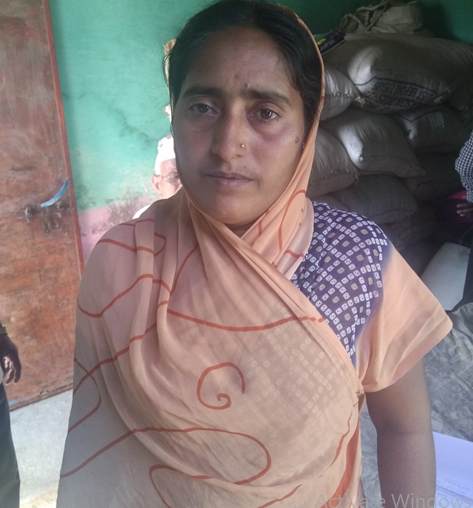
[Maharashtra is facing one of the most severe droughts since 1972, with the state government declaring drought in 180 tehsils out of 350. Entire Marathwada (spread across Southern and Eastern Maharashtra) region is in dire condition now. This is part 4 of the series of ground reports by Newsclick.]
Latur: Randavan Raju Chavan stares into space with her eyes welled up. She is worried about the future of her three children. Her husband, Raju Chavan, committed suicide 10 months ago, who is survived by his ailing parents, two daughters, a son and 32-year-old Randavan. “How will I survive? I am really clueless,” says Chavan. She is from Hanamantwadi Halgara village of Nilanga tehsil from Latur district.
Maharashtra has seen the highest number of farmers’ suicides in the last decade. Despite a number of provisions declared by successive governments, farmers are committing suicides, as they continue to remain entangled in the vicious circle of debt, drought and damage to the crops. As 2019 brings one of the worst droughts in the last thirty years, farmers’ families are struggling to recover from the agrarian crisis as well as the psychological trauma.
Chavan’s family owns 3.5 acres of land. “This year, we have been able to grow only five quintals of soybean. How much will I earn from this? About Rs 15,000, as the soybean market is down. I am already in a debt of Rs 46,000. So, I am not selling the soybean now. I can show it to the people from whom I have borrowed money, and can buy time to raise money,” says 76-year-old Sheshrao Chavan, father-in-law of Randavan.
Randavan’s older daughter is 12 years old, son is nine years old, and the youngest daughter is seven years old. “My oldest one is mentally challenged; son is staying with my sister, but he has asthma. My father-in-law is ill, and so is the mother-in-law. I am the only person fit to do any work. So, I have to do everything: getting water, cooking, washing clothes,” says Randavan.
The reasons behind farmers’ suicides have been discussed time and again by several experts. The farmers are under huge debt, have failed in getting enough price for their crops. The expenditure on medical issues as well as other necessities is higher than the income. So, farmers are borrowing more and more money, but year after year, the situation does not improve. This prods them to take the extreme step.
Similar is the story of Gajanan More from the neighbouring village Botkul from the tehsil. He was a boy of 25; a BA graduate. He also had a diploma in education [D Ed]. He looked for a job for over three years, appeared for various competitive exams, but failed to crack any. So, he returned to his native place. He tried his hand at farming by sowing papaya. He had thought that the fruit crop on two acres of his land will help him earn at least Rs 2,00,000. However, the crop was reportedly damaged due to an infectious decease. Gajanan could not cope with the loss, and committed suicide on November 23, 2018. He is survived by his 60-year-old father Vyankat, and his wife.
The information from a reply to an RTI application shows that state has seen 11,598 farmers suicides between 2015 and 2018. The number shows steep increase from 6,268 suicides recorded between 2011 and 2014. According to the various reports as well as claims by farmers’ unions, close to 1,25,000 farmers have taken their lives since 2000.
The data shows that the number of suicides is increasing across the regions. Earlier, the region that witnessed majority of such cases was Western Vidarbha. However, now, farmers from Marathwada too are committing suicides. The otherwise rich region of Western Maharashtra has also witnessed this crisis in the last three years.
“Families of the deceased farmers do get a compensation of Rs one lakh from state government. Locals do help too. But with your entire life ahead, this amount won’t be enough. There should be concentrated efforts to help these families. They need to have work and a source of income source,” said Raju Shetti, a Member of Parliament, and leader of the Swabhimani Shetkari Sanghatana.
Be it Randavan or Vyankat More, these stories speak volume of the farmers’ struggle, which has worsened with the drought. They are stressed, depressed, worried about their future, and cannot picture a way out. Randavan says, “Sometimes, I too want to commit suicide. But then, who will look after my children and these elders?”




